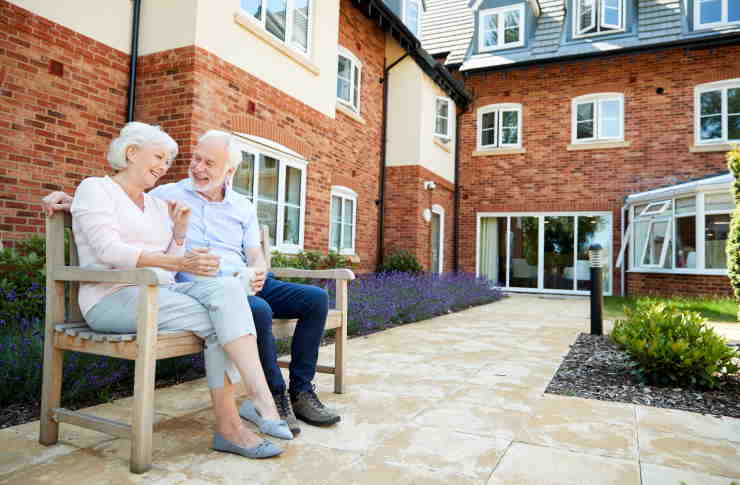Over-60 Housing Association Flats: Guide to Accessible and Secure Living
Housing association flats for people over 60 are designed to combine independence with practical support. This guide explains what these homes typically offer, the eligibility criteria, and the benefits of choosing this type of accommodation. From accessible layouts to community facilities, you’ll learn how these flats can provide comfort, security, and a sense of belonging while still allowing you to live life on your own terms.

What are the eligibility requirements for housing association flats?
Housing association flats for over-60s typically require applicants to meet specific age and local connection criteria. Most housing associations set the minimum age at 60, though some schemes accept residents from 55 onwards. You’ll generally need to demonstrate a local connection through previous residence, employment, or family ties to the area where the accommodation is located.
Priority is often given to applicants with medical conditions that would benefit from accessible housing, those currently living in unsuitable accommodation, or people facing homelessness. Many housing associations operate through local authority waiting lists, requiring registration with your council’s housing department. Financial assessments may also apply, with some schemes designed specifically for those on lower incomes or receiving housing benefit.
What key features and benefits do senior-friendly housing associations offer?
Senior-friendly housing associations provide numerous advantages tailored to older residents’ needs. Properties typically include accessibility features such as level access showers, grab rails, wider doorways, and emergency alarm systems connected to 24-hour monitoring services. Many developments offer communal areas including lounges, gardens, and laundry facilities that encourage social interaction and community building.
On-site support varies by provider but often includes scheme managers who can assist with practical matters and coordinate maintenance requests. Some developments provide additional services like cleaning, gardening, or meal preparation for an extra fee. The security aspect is particularly important, with many schemes featuring secure entry systems, CCTV, and regular welfare checks to ensure residents’ wellbeing.
How do you apply for a housing association flat for seniors?
The application process typically begins with registering on your local authority’s housing waiting list, as many housing associations allocate properties through council nomination schemes. You’ll need to complete a detailed application form providing information about your current housing situation, medical needs, and personal circumstances.
Supporting documentation is usually required, including proof of identity, income statements, medical assessments if relevant, and evidence of your local connection. Some housing associations accept direct applications, particularly for shared ownership schemes or properties not allocated through council waiting lists. Processing times vary significantly depending on demand and your priority level, with some applicants waiting several years while others with urgent needs may be housed more quickly.
What are the differences between general rentals and age-restricted housing?
Age-restricted housing differs substantially from general rental accommodation in both design and community structure. While general rentals cater to all age groups with standard fixtures and fittings, senior housing incorporates specific accessibility features and safety measures from the outset. The community aspect is markedly different, with age-restricted housing fostering environments where residents share similar life experiences and challenges.
Rental costs for housing association properties are typically lower than private market rates, with additional security through regulated rent increases and stronger tenancy rights. Age-restricted housing often includes service charges covering communal area maintenance, emergency alarm systems, and scheme manager services – costs not typically found in general rentals. The trade-off is less flexibility in terms of decorating, pet ownership, and visitor policies compared to private rentals.
How can you assess whether a flat meets your long-term needs?
Evaluating long-term suitability requires careful consideration of both current and anticipated future needs. Assess the property’s accessibility features including step-free access, bathroom design, and potential for mobility aid use throughout the home. Consider the location’s proximity to essential services such as healthcare facilities, shops, and public transport links that may become increasingly important over time.
Review the support services available and whether they align with your preferences for independence versus assistance. Examine the community environment and activity programs to determine if they match your social needs and interests. Financial sustainability is crucial – ensure you can afford not just the rent but also service charges and any optional services you might need. Consider the housing association’s reputation for maintenance, tenant satisfaction, and long-term stability of the scheme.
| Housing Association | Average Weekly Rent | Key Services | Service Charge Range |
|---|---|---|---|
| Anchor Hanover | £95-£140 | Scheme manager, 24/7 support, communal facilities | £25-£45 per week |
| Clarion Housing | £85-£125 | Emergency alarms, maintenance, community activities | £20-£40 per week |
| Places for People | £90-£130 | On-site support, secure access, garden maintenance | £22-£38 per week |
| Housing & Care 21 | £100-£145 | Care services, meal options, cleaning services | £30-£50 per week |
Prices, rates, or cost estimates mentioned in this article are based on the latest available information but may change over time. Independent research is advised before making financial decisions.
Housing association flats for over-60s represent a valuable housing option that bridges the gap between independent living and residential care. The combination of affordable rents, purpose-built accessibility features, and supportive community environments makes these properties particularly suitable for older adults seeking security and social connection. While waiting times can be lengthy and eligibility criteria specific, the long-term benefits of stable, appropriate housing often justify the application process. Thorough research and early application increase your chances of securing accommodation that meets both your current circumstances and future needs.




